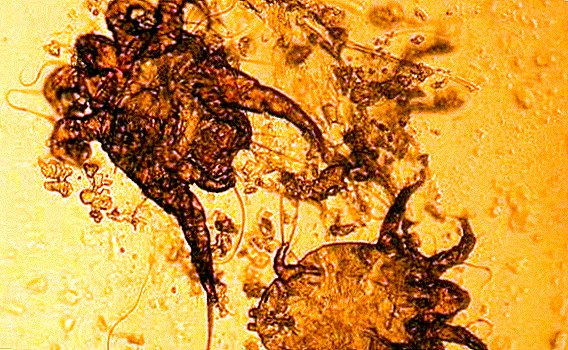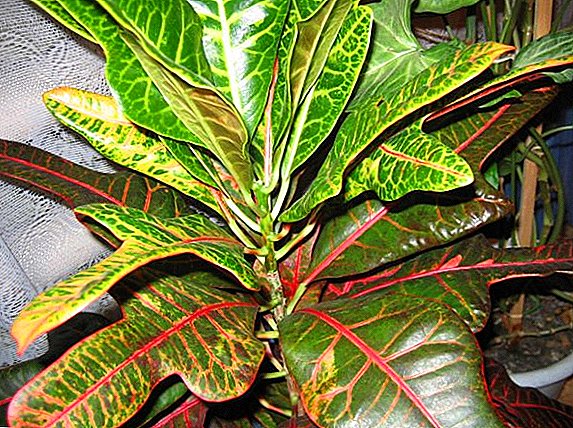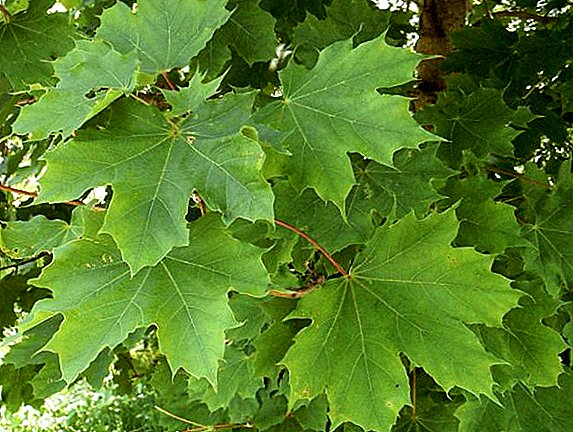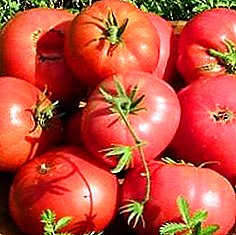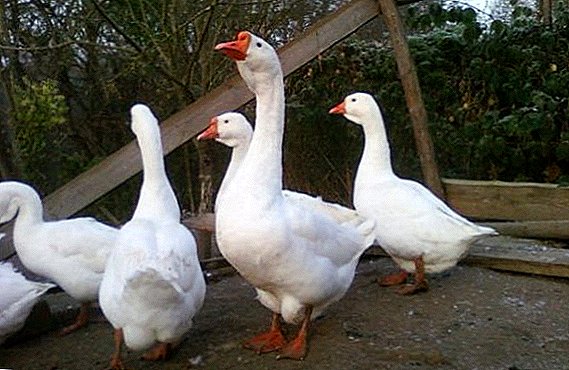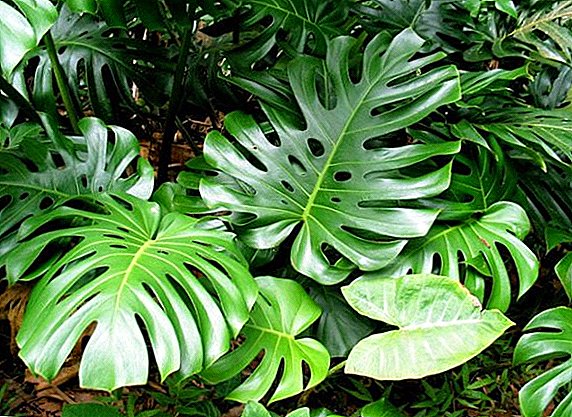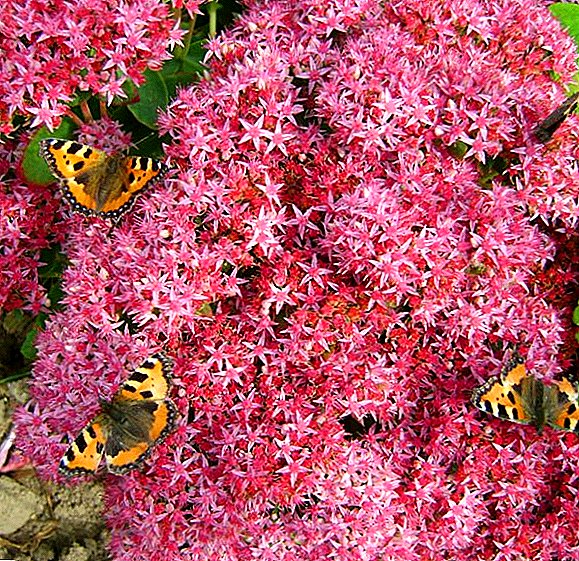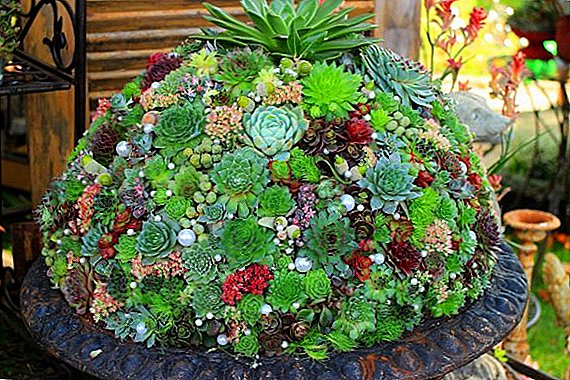 Compositions from molodilas - this is the most practical option for the suburban area, which is intensely lit by the sun and can not boast of fertile soil. Fortunately, the young has a variety of varieties, the number of which exceeds fifty. But we will focus on the nine most common and attractive.
Compositions from molodilas - this is the most practical option for the suburban area, which is intensely lit by the sun and can not boast of fertile soil. Fortunately, the young has a variety of varieties, the number of which exceeds fifty. But we will focus on the nine most common and attractive.
Rejuvenated roofing
 This is a fairly large representative of stone roses, the sockets of which are often 20 cm in diameter, and about 8 cm in height. Even taller and more attractive are the flower stalks, which are also densely covered with flowers, which also have leaves on themselves.
This is a fairly large representative of stone roses, the sockets of which are often 20 cm in diameter, and about 8 cm in height. Even taller and more attractive are the flower stalks, which are also densely covered with flowers, which also have leaves on themselves.
Their height can often be 60 cm. The flowers are painted in dark or light purple color, and they appear on the plant in the middle of July and remain on it until the end of August (the flowering period can reach 45 days).
In the natural environment, roofing young can be found throughout the territory from European Russia to the southern parts of Europe, and even in the desert territories of Asia Minor.
The flowerbeds from the molodilo roofing are very attractive, because the plant is able to multiply very rapidly and conquer all new areas..
Attracts to itself the attention of beautifully gathered in a bunch of leaves, which at the ends have a tapering. Although usually the entire leaf has only a green color, their shoots may have a reddish tint.
It is worth noting that this perennial plant also has two garden varieties - with purple and with brown-bronze rosettes of leaves. They may differ from each other in the size of the sockets - from 3 to 20 cm.
Did you know? Molodil often planted not only in open areas near the house, but also in pots, as a houseplant. But just like in the open field, indoors it is important to provide the flower with the longest possible contact with the sun's rays, as well as regularly ventilate the room.
Young Russian
 This reed was most prevalent in Russia, as well as in the Balkan and some Asian countries.
This reed was most prevalent in Russia, as well as in the Balkan and some Asian countries.
Rosettes with leaves of this plant can be even larger than the roofing stone rose - from 20 to 35 cm. The diameter of the plant is quite small - only 7 cm. At the same time, the plant is characterized by unique stems covered with furrows and hairs, which are processes of the glands.
The sockets of the plant are oblong, often wedge-shaped. Inflorescences appear on them in July and August, but they hold no more than 40 days. The inflorescences themselves are very loose, albeit fluffy, can be stretched to a height of 10 cm. The flowers have a yellowish color, like their stamens.
Spiderweb
 Your stone roses in the garden will especially attract attention if you stop at a variety of spider web.
Your stone roses in the garden will especially attract attention if you stop at a variety of spider web.
This perennial flower is distinguished by small spherical rosettes up to 2 cm in diameter, which attract attention with rich green leaves with a slight reddening.
The name of this variety was given white hairs, which completely envelop the leaves of the plant, as if it were cobweb.
This variety and its purple-red flowers, which appear already in the second half of July, are distinguished (in the southern regions flowering may occur earlier). There are also various subspecies of this variety, which differ in size and color of leaves.
Rejuvenated marble
 A young bird may differ not only in colors, but also in the coloring of the leaves. Especially in this issue stands out young marble, the sockets of which at a young age have a slight pubescence, as well as a reddish color with green edges and tops.
A young bird may differ not only in colors, but also in the coloring of the leaves. Especially in this issue stands out young marble, the sockets of which at a young age have a slight pubescence, as well as a reddish color with green edges and tops.
Sockets in diameter are relatively small - up to 10 cm, but flower stalks can be pulled up to 20 cm. Peduncles literally plastered with reddish flowers with white rims on the edges of the petals.
In this natural environment, this species has not been found here, therefore, it is necessary to buy seeds or adult plants in pots for planting on the site. But it should be borne in mind that the variety also has a number of subspecies.
Did you know? Almost all varieties of the young are medicinal and are widely used in traditional medicine. In particular, medicines are prepared from stone rose for disinfection and anesthesia, they are very good for healing deep wounds. As a medicine, leaves are collected that are recommended to be harvested during the flowering period.
Rejuvenated spherical
 This variety in its natural environment grows at high altitude - up to 3 km, and is found mainly in the Caucasus, where there are many stony slopes. This fact must be taken into account when planting a ball-shaped young in its garden - with an overabundance of moisture and shade, it may not even take root.
This variety in its natural environment grows at high altitude - up to 3 km, and is found mainly in the Caucasus, where there are many stony slopes. This fact must be taken into account when planting a ball-shaped young in its garden - with an overabundance of moisture and shade, it may not even take root.
Young blooms spherical, like all other varieties, starting in the second half of summer. From small sockets up to 3 cm in diameter, the peduncle rises, which can reach 15 cm in height. Flowers are formed on it rather densely, have a greenish-yellow color. The leaves of the plant itself are green, but with red tips.
Rejuvenated undersized
 Another stone rose that prefers to grow on the heights of the mountainous Caucasus. Under natural conditions, it is found on stony mountain elevations at an altitude of 2 to 3 km. He has very small sockets - only 2.5 cm in diameter. The leaves have a green color and are distinguished by slight cuspings at the edges, similar to thin cilia.
Another stone rose that prefers to grow on the heights of the mountainous Caucasus. Under natural conditions, it is found on stony mountain elevations at an altitude of 2 to 3 km. He has very small sockets - only 2.5 cm in diameter. The leaves have a green color and are distinguished by slight cuspings at the edges, similar to thin cilia.
But the peduncles they can rise to 25 cm in height, except for the flowers they also cover the leaves. It blooms purple-purple, very delicate color, on each petal there is a darker strip, which is located exactly in the middle. Flowering begins from the end of June, and by the end of August it is already possible to gather fruits and seeds from the plant.
Important! As soon as the flowers on the young start to fade, they should be immediately removed from the plant. When the peduncle dries out and the fruit with seeds is formed on it, the socket itself begins to dry up, after which it may die.
Rejuvenated wulfen
 The gardeners won special love from the beds of the young Wolfen, because this variety of stone rose is distinguished by green shiny leaves, framed by the cilia at the edges and showing off its red base.
The gardeners won special love from the beds of the young Wolfen, because this variety of stone rose is distinguished by green shiny leaves, framed by the cilia at the edges and showing off its red base.
In its natural environment, this flower is found in the Alps, at an altitude of 1.7 to 2.7 km. This variety is very sensitive to acidic soil, so it is recommended to plant on limestone.
The rosettes of the plant are very small, in diameter can reach only 4-5 cm. But the flower stalks can stretch from 15 to 25 cm, which depends on the favorable location of the growing area. The flowers have a pleasant lemon yellow color, with a purple spot on the base.
Did you know? Leaves of the young help to whiten the face, especially if it is covered with freckles or age spots. To do this, the skin is simply rubbed with freshly harvested leaves that just let the juice.
Molodit "Gamma"
 This variety is the hardest to find, but it is most attractive to gardeners, because it has dark brown leaves.
This variety is the hardest to find, but it is most attractive to gardeners, because it has dark brown leaves.
It blooms from mid-summer, the flowers are white. In the natural environment, young "Gamma" is not found, as it is the result of the work of breeders.
But because of this, it is more resistant to wet soil and tolerates weak shading.
Young Caucasian
 Among the types of stone rose flowers, Caucasian is young and deserves special attention. The height of the rosettes of this plant often fluctuates, but it can stretch up to 20 cm, although they rarely exceed 5 cm in diameter. There are a large number of white glandular hairs on the stems, which make them fluffy and attractive.
Among the types of stone rose flowers, Caucasian is young and deserves special attention. The height of the rosettes of this plant often fluctuates, but it can stretch up to 20 cm, although they rarely exceed 5 cm in diameter. There are a large number of white glandular hairs on the stems, which make them fluffy and attractive.
The inflorescences are many-flowered, their width can reach 7 cm. The color of the flowers can be found both in purple and in more tender lilac-purple.
Caucasians bloomed in July and August, although in late August - early September, you can usually collect seeds. However, fruits on a plant are formed quite rarely, therefore, it is more practical to propagate it in a vegetative way.
Important! When planting rejuvenated Caucasian at his dacha, be sure to take care to fertilize the soil with calcium. Otherwise, the plant will take root very badly, it may not bloom.
As you yourself could see, young has very colorful species and varieties that are able to decorate any suburban area. Fortunately, this plant is not fastidious, and once planted it on the site, in the future it will only be necessary to weed it periodically.



